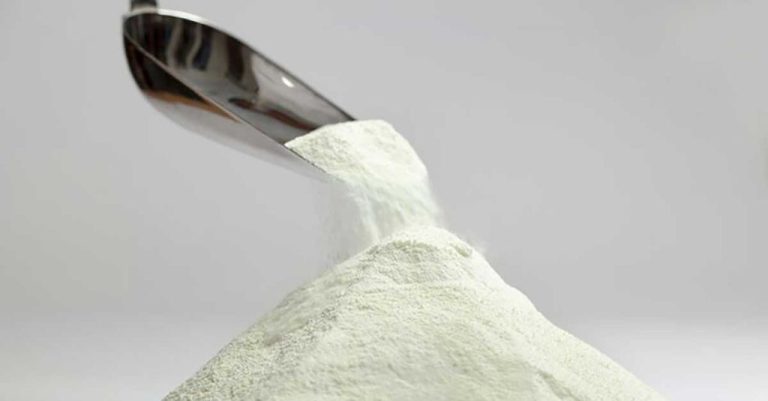What Makes Celadon So Special?
Celadon is a type of porcelain, characterized by its distinctive pale green glaze. The term “celadon” comes from the French word for the gray-green color. Celadon was first produced in ancient China and later spread to Korea and Japan, reaching the peak of its popularity and artistic achievement during the Goryeo dynasty in Korea from 918 to 1392 CE (http://www.antiquealive.com/masters/m16/master16_view3.html).
Celadon is created by firing ceramic ware such as vases, bowls, and other vessels in a reduction kiln atmosphere. This process produces the unique pale greenish-blue glaze, often compared to the color of jade. The glaze is transparent, allowing the fine details of carvings on the ceramic body to show through. Celadon glazes can also display cracked patterns known as “crazing” that many collectors find visually striking. What makes celadon so distinctive and special is this singular color and aesthetic unmatched by other types of porcelain.
Origins and History
Celadon originated in China during the Tang dynasty around the 9th century CE. It was later introduced to Korea and Japan, where it became extremely popular. The technique for creating celadon likely came from China’s Longquan kilns, which were renowned for their beautiful green glazes.
Over time, celadon production spread across Asia and unique regional styles developed. In Korea, celadon from the Goryeo dynasty (918–1392) is considered a high point, producing elegant shapes and techniques like inlaid decoration. The Japanese also became known for stunning celadon glazes, especially during the Momoyama period (1573–1615).
Celadon gets its distinct green color from iron oxide in the glaze. Longquan celadons were praised for their subtle and ethereal sea-green colors, achieved by controlling the firing conditions and glaze ingredients. The glaze must be reduced, meaning fired without oxygen, while the clay body oxidized. Mastering the technique took great skill.
Over the centuries, celadon continued gaining prestige and was sought after by nobility and the elite. The mysterious green glazes were considered precious, causing celadon to become influential across Asian ceramic arts before making its way to the West.
Sources:
https://www.dhgate.com/product/designer-triangle-hair-clip-barrettes-women/878978492.html
https://www.dhgate.com/wholesale/story/3.html
Manufacturing Process
Celadon pottery requires precise materials and techniques to achieve the characteristic jade-green glaze. The clay body is an iron-rich stoneware, often mixed with small amounts of other minerals like feldspar to enhance the glaze effects.
The pottery pieces are first shaped on a wheel, then fired in an oxidizing kiln around 2200°F. This bakes the clay and readies it for glazing. To apply the celadon glaze, artisans use brushes to coat the bisque ware carefully and evenly.
After glazing, the pottery undergoes a second firing in a reduction kiln around 1900-2000°F. This kiln atmosphere, with limited oxygen, causes the iron in the glaze to change from oxidized red to reduced green. Controlled cooling then brightens and intensifies the celadon color.
The entire process requires meticulous technique to achieve the precise coloration and jade-like translucency prized in celadon ware. From raw materials to final firing, celadon production developed over centuries into the technical and artistic accomplishment it represents today. (Britannica, The Spruce Crafts)
Distinctive Visual Characteristics
Celadon is known for its distinctive visual style, characterized by a pale green glaze, simple forms, and delicate crackled textures. The archetypal celadon color is a soft, grayish green that resembles jade. This distinctive hue is achieved through precise control of the kiln firing atmosphere and specific glaze chemistry. The glaze must contain a small amount of iron oxide, which fires to a grayish-blue color in a reduction atmosphere. When the pottery is cooled in air, the iron oxide oxidizes and turns celadon green.
Celadon wares typically have minimal surface decoration beyond the subtle crackle glaze effect. Appliqués and carved detailing are done sparingly. Instead, celadon highlights the beauty of pure, graceful forms like bowls, vases, and incense burners. The serene palette and simple designs create an elegant, soothing aesthetic.
The crackled glaze texture is another signature mark of celadon. It results from the glaze being purposefully formulated to contract and expand at a different rate compared to the clay body during rapid cooling after firing. This shrinkage creates a fine web of cracks across the glaze surface. The crackle glaze first emerged during the Song dynasty in China, and was prized for its resemblance to crazed jade.
Highly Prized and Valuable
Celadon is regarded as one of the most valuable and luxurious types of Chinese ceramics. The pale green glaze and refined craftsmanship make celadon wares highly desirable to collectors and museums around the world. This high demand has resulted in jaw-dropping auction prices for rare celadon pieces.
In 2022, a rare 18th century Qianlong period celadon jar sold for US$6.7 million at auction in Hong Kong. Another highlight was a Qianlong mark and period celadon vase that fetched HK$17.2 million in 2017. These record-breaking sales demonstrate the immense value placed on top quality celadon wares, especially those from the peak of imperial Chinese production.
Museums also spare no expense when acquiring celadon masterworks for their collections. The prices realized at auction underline the precious status celadon holds as one of the most prized types of Chinese art.
Difficult to Successfully Produce
One of the primary reasons celadon is so highly valued is because it is remarkably challenging to successfully produce. Celadon wares require specialized firing and glazing techniques that result in a very high percentage of failures.
According to this article, creating celadon requires firing the pottery at extremely high temperatures, usually over 1,100°C. This was an impressive technical achievement in ancient times. Controlling the kiln temperatures and atmosphere was difficult, and any imperfections in the process could ruin an entire kiln load.
The glazes used on celadon also contribute to the challenges. The unique blue-green glaze must be expertly balanced and applied. Too thick or thin and the distinctive color will not develop properly. The ancient potters created innovative techniques like glaze pools and inlay to produce the subtle effects celadon is known for.
Even with immense skill and experience, celadon potters had to contend with ruined batches and pieces. The beautiful ones that did survive are testaments to the advanced skills and perseverance of the early artisans.
Influence on Ceramics
Celadon’s distinctive visual characteristics and prized status led potters around the world to create their own celadon-inspired pieces, incorporating the technique into local styles. According to Christie’s, celadon’s popularity and high value “inspired imitation celadons” in regions such as Thailand, Japan, and the Middle East. Potters aimed to reproduce celadon’s vivid green glazes and crazed surface patterns. For example, Thai potters developed their own rich green glazes and intricate carved designs inspired by Chinese celadon forms from the 14th-16th centuries.
The celadon technique spread along trade routes, adopted by potters who sought to emulate the coveted ceramic style. As Christie’s notes, “It became highly fashionable for ceramics made locally to copy the shapes and decorative motifs of the coveted Chinese wares.” From Japan’s Oribe and Shino wares to Persia’s fritware, potters worldwide incorporated elements of celadon, adding their own innovative touches while aiming to recreate its captivating greenish-blue hues.
Cultural Significance
Celadon pottery has played an important cultural role, especially in East Asia. Its distinctive green-blue glaze made it highly prized and it became closely associated with tea ceremonies and spiritual traditions. For example, celadon was valued in Korea as representative of the country’s cultural heritage and a source of national pride.
The perfection of the glaze and elegance of celadon pieces also made them prized for use in tea ceremonies in China, Japan and Korea. The color was thought to enhance the green tea and celadon was believed to have spiritual associations with purity and calmness. Emperors would often reserve the finest celadon pieces for royal tea ceremonies.
Celadon continues to be closely tied to cultural identity and tradition in East Asia today. High quality celadon glazes and artistic techniques are still practiced and revered as important intangible cultural heritage.
Notable Celadon Collections
Celadon ceramics produced during the Goryeo dynasty in Korea are prized collector’s items today. Some of the most significant public and private celadon collections are held by the following:
- The National Palace Museum of Korea in Seoul holds over 1,000 pieces of Goryeo celadon, including many National Treasures and rare examples (https://www.museum.go.kr/site/eng/archive/united/9789).
- The Metropolitan Museum of Art in New York has an extensive collection of Goryeo celadons featuring diverse shapes and decorative techniques (https://www.metmuseum.org/toah/hd/cela/hd_cela.htm).
- The British Museum holds over 150 pieces of Korean celadon from the 10th to 15th centuries, including inlaid and carved designs.
- The Tokugawa Art Museum in Japan contains Goryeo celadons gifted from the Korean peninsula to Japan’s shoguns.
- Billionaire art collector George Daniels assembled one of the most important private collections of Korean celadon before his death.
The Future of Celadon
Celadon production continues today, though on a smaller scale than in ancient times. Modern celadon artists work to preserve the traditional techniques while also evolving celadon in new directions.
One key focus is sustaining the quality and craftsmanship that make celadon so special. This involves using the same labor-intensive processes for shaping, glazing, and firing each piece (Celadon Pottery | Definition, History & Variations). Master potters train apprentices over many years to properly execute every step.
Another important effort is expanding the aesthetic range of celadon. While staying true to its essence, ceramists create new glaze effects, forms, and decorative motifs. They aim to keep celadon fresh and engaging for contemporary audiences, rather than have it be perceived as merely a historical relic.
Overall, the goal is to honor celadon’s rich legacy while also evolving the tradition. By sustaining quality and innovating artistically, today’s celadon artists hope to preserve this unique ceramic art form for future generations.



